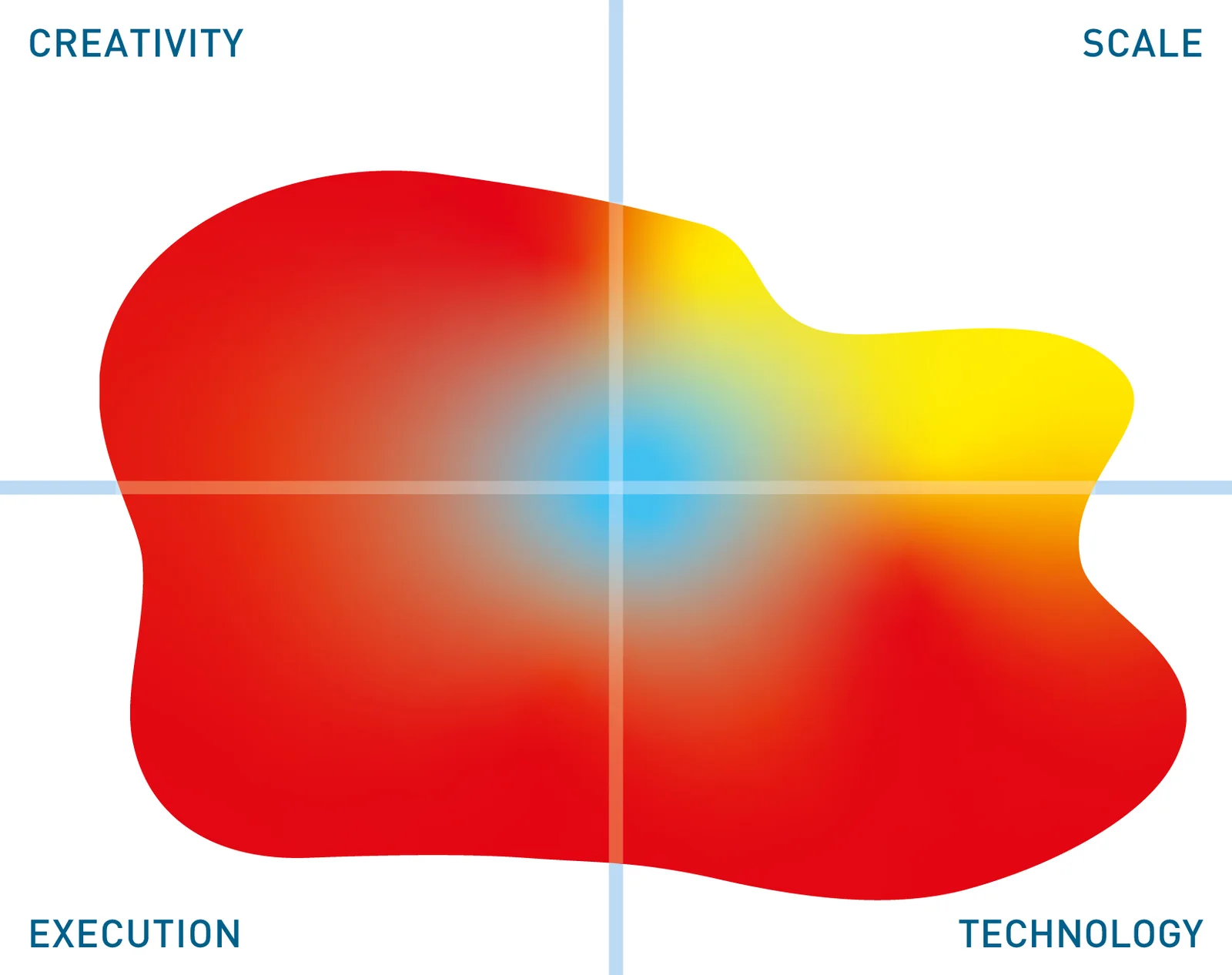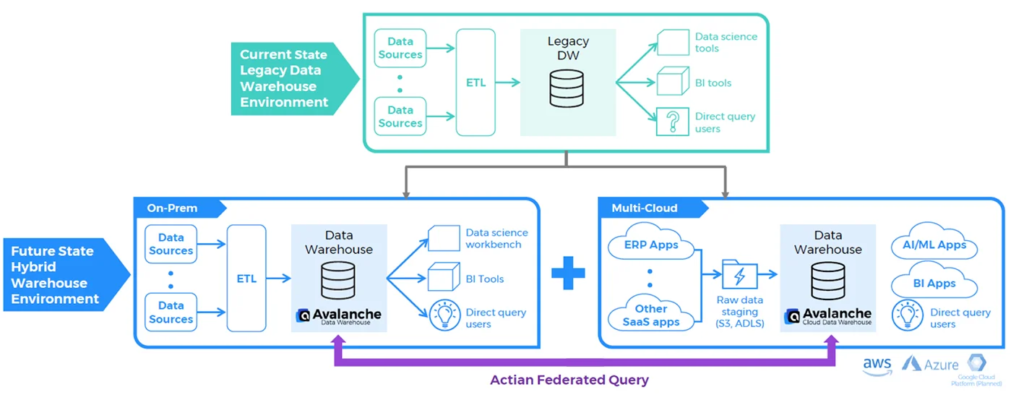Actian Avalanche
Update solution on February 17, 2025

The most recently introduced of Actian’s database products is Actian Avalanche, which is a hybrid cloud/on-premises, columnar (with compression) data warehouse offering provided as a managed service when in the cloud. It is ANSI SQL 2016 compliant and currently runs on the Azure platform and AWS. From a go-to-market perspective the company’s main message is that you can migrate – see Figure 1 – both your data and your applications to Avalanche from your current environment at your own pace. This is backed up by the fact that compute is separated from storage (on Azure only at present) and that the analytics engine (which is based on Actian’s Vector database technology) is completely compatible across environments.

The company’s migration offering is supported by a toolkit, which includes migration capabilities for tables, views, users and so forth as well as SQL conversion functionality. The company is targeting existing legacy on-premise data warehouse appliances and offers automated tools for migrating from IBM Netezza, Oracle Exadata, and Teradata. In this context, and more generally, it is also worth noting the connectivity and integration capabilities provided by the Pervasive assets that Actian acquired in 2013.
Customer Quotes
“We provisioned Actian Avalanche without any manual database tuning –
to see what its on-chip caching and smart compression could do. Actian Avalanche performed 2x to 200x faster than Oracle. It performed so well that we did not have to look at competing solutions.”
Jean-Francois Rompais, Head of IT Architecture, Kiabi
“Our past experiences with relational databases often involved major limitations that prevented us from meeting our customers’ big data needs. Actian provides the only solution to combine the exceptional performance and manageability we require with the affordability our customers demand.”
Clarence Rozario, Senior Product Manager, Zoho

Figure 2 illustrates the Actian Avalanche architecture. However, this will take some explanation. For example, DataFlow is a high-performance integration engine that was originally developed by Pervasive, while Zen (which was previously PSQL and before that Btrieve) is used in Internet of Things environments as an edge or mobile database, hence the gateway provided. In this context, it is worth commenting that time-series data is not currently supported by Avalanche, though it is supported in Zen. Similarly, geospatial data has not yet been implemented in Avalanche though it is supported in the Actian X database (which is targeted at hybrid transactional and analytic environments).
Vector is the database engine, and it has some notable characteristics. For instance, it exploits Intel’s vector instruction set (hence the Vector name) to process more data elements per instruction (SIMD: single instruction, multiple data) and optimises for L1 and L2 cache. Indeed, there has been considerable academic work involved in the development of Vector, which was created initially at CWI, the Dutch National Research Institute for Mathematics and Computer Science, and the technology incorporates patented algorithms for optimising the use of memory. A further patented technology known as Positional Delta Trees enables real-time updates without impact to query performance. For what it is worth benchmarks suggest that Avalanche has significant performance benefits compared to other cloud data warehouses.
The warehouse understands Spark datatypes and the optimiser treats third-party storage such as Amazon S3 and Hadoop as external tables with the ability to push-down predicates so that Avalanche supports full data virtualisation across these sources rather than mere query federation. User defined functions are available to support machine learning and there is support for R, Scala, Python, and all the usual business intelligence and analytics tools, and TensorFlow will be supported later this year. The ingestion of JSON documents is supported and the company plans to introduce features to optimise performance for the analysis of these.
Avalanche is a relatively new offering, having only been released in March 2019. As such it lacks some features that we would like to see, notably geospatial and time-series capabilities, which will be important for some IoT applications. That said, this sort of functionality are on the roadmap and expected to be released in the second half of 2020. Leaving that aside, the product shows significant promise. The company has a significant history in the database market and knows what it is talking about when it comes to performance, database optimisation, administration and management (Actian FlexPath cloud resource management) disaster recovery, high availability, security (multi-factor authentication) and so forth.
We especially like the approach Actian has taken towards migration from legacy data warehousing implementations, both in the tools that the company makes available to ease this process, and in the way that the hybrid nature of the environment will allow you to migrate to the cloud at your own pace.
The Bottom Line
Actian has always had excellent technology. It has, however, struggled with marketing and visibility. With HCL fully committed to Actian Avalanche, and the ability to leverage that company’s worldwide salesforce, there is every possibility of Avalanche being recognised as a market-leading offering within the cloud/hybrid data warehousing space.
Related Company
Connect with Us
Ready to Get Started
Learn how Bloor Research can support your organization’s journey toward a smarter, more secure future."
Connect with us Join Our Community
